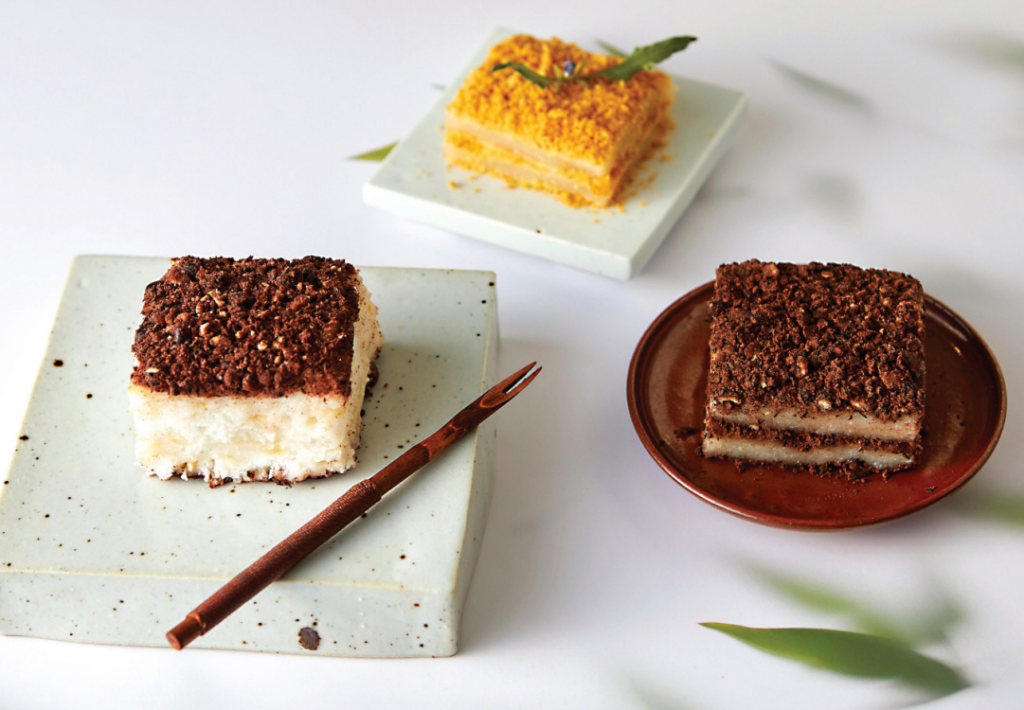Korea’s natural environment features mountains, plains, and seas in equal measure, contributing to the country’s diverse and unique culinary cultures. Korean food, or hansik, is characterized by a clear distinction between the main dish (rice, noodles, etc.) and the side dish (called banchan), diverse recipes, a balanced mix of animal and plant products, and refined fermented foods created with great care over long periods. The Korean people have also believed that food and medicine share the same origin, following the adage that “food is the best medicine.”
“K-Food” has been taking the world by storm with its superb taste and benefits to health. The World Health Organization (WHO) described hansik as a superb culinary model with nutritional balance, with many researchers reporting that hansik prevents obesity and cancer.
Doenjang, Ganjang, and Gochujang
Doenjang (soybean paste), ganjang (soy sauce), and gochujang (red chili paste) are three of the most basic condiments and the most widely enjoyed fermented foods in Korea. Doenjang and ganjang are made from meju, which refers to soybeans boiled, pounded into paste, and formed into brick-shaped lumps. These lumps are dried and fermented, and then kept in large clay pots with salt water for around two to three months. The resulting solids are made into doenjang, and the liquid is used as ganjang. These sauces offer a uniquely savory and rich salty taste.
Gochujang is a traditional Korean food made by fermenting a mixture of soybean malt, starch (powdered rice, barley, etc.), and adding chili pepper powder and meju powder. Being lovers of spicy foods, Koreans use gochujang in a wide variety of dishes.

An area outside the kitchen used to store large brown-glazed pottery jars containing soy paste, soy sauce, and chili paste.
Korean pottery jars allow for proper ventilation, so they are perfect for preserving fermented food. The ideal location for Jangdokdae would be a well-ventilated area with sufficient sunlight.

This stew-like Korean dish is made by boiling an assortment of ingredients such as meat, clams, vegetables, mushrooms, chili, tofu, and soy paste.
Kimchi
Kimchi is a staple side dish that a majority of Koreans can’t go without. To them, no meal is complete without kimchi. Kimchi is commonly made by fermenting a mixture of salted kimchi cabbage, radish, and paste made of red chili powder, garlic, spring onion, salted fish sauce, and other ingredients. Different regions (and different houses, for that matter) use different ingredients and recipes, resulting in more than a hundred major variations. In recent years, more and more Koreans have started eating store-bought kimchi rather than making their own.
Made with more than 15 ingredients, kimchi is a great source of nutrients such as vitamins A and C, and the fermentation process creates large amounts of lactic acid bacteria. These nutritional benefits have boosted kimchi’s popularity as an antioxidation and weight-control option across the world, and a large body of research supports its effectiveness in preventing cancers, hypertension, diabetes, atopic dermatitis, and other diseases.
Traditionally, Korean families or villages would get together once a year for “kimjang,” which means a gathering held in late autumn specifically for making a vast amount of kimchi. The kimchi made during these gatherings, called “kimjang kimchi,” would sustain the family or the village throughout the coming winter. The “Kimjang, making and sharing kimch” was inscribed on the UNESCO Intangible Cultural Heritage in 2013.
Bibimbap
Bibimbap is a Korean rice dish topped with an assortment of fresh and seasonal vegetables, fried eggs, minced beef, and other ingredients. Along with kimchi and bulgogi, it is one of the three most popular Korean foods outside of Korea. There are countless variations of bibimbap depending on what ingredients are added to the mix. People outside of Korea have created localized versions of bibimbap by adding their own flavors. Every October, a bibimbap-themed festival is held in Jeonju, a UNESCO-designated Creative City of Gastronomy.

Cooked rice served with fresh and seasoned vegetables, minced beef, and chili paste
Bulgogi
Bulgogi, which literally means “fire meat,” refers to a traditional Korean dish made by grilling thin meat slices marinated with various condiments such as soy sauce and pear juice. Its rich and pleasantly salty flavor has made it one of the most popular Korean foods among foreigners. Bulgogi has been wildly featured in cross-over foods as well, such as bulgogi hamburgers and pizzas.

Stripped or shredded beef marinated with soy sauce–based condiments and grilled
Bulgogi
Stripped or shredded beef marinated with soy sauce–based condiments and grilled

Sirutteok (Steamed rice cake) is a type of small rice cake made by kneading glutinous rice powder with hot water, shaping the dough into balls, boiling them in hot water, and coating them with powder such as bean or sesame seed powder.
Liquor
A wide variety of liquors have been developed across different parts and families of Korea. Currently, some 300 traditional liquors have survived, including Munbaeju (pear-flavored liquor) and Songjeolju (pine knot liquor) in Seoul; Sanseong Soju (distilled liquor) in Gwangju, Gyeonggi-do; Hongju (red liquor) and Leegangju (distilled liquor) in Jeolla-do; Sogokju (rice wine) and Insamju (ginseng liquor) in Chungcheongdo; Kyodong Beopju (rice liquor) and Andong Soju (distilled liquor) in Gyeongsang-do; and Okseonju (distilled liquor) in Gangwon-do.
Makgeolli (unrefined rice wine) is one of the most popular and affordable traditional alcoholic beverages in Korea. It is made by fermenting a mixture of rice and malt along with various other ingredients. It used to be considered a beverage mainly enjoyed by older generations. However, the beverage has been all the rage among Koreans in their 20s and 30s, with makgeolli ice cream, coffee, and other flavors spreading across convenience stores around the country. It is also highly popular among international tourists visiting Korea.
Soju is a distilled liquor made by boiling alcoholic beverages made with grains or sweet potatoes. This colorless liquor has a significantly higher alcohol content than makgeolli. Soju was traditionally considered a luxury. However, in the mid-20th century, a soju made with diluted ethanol emerged as a cheap, people-friendly alternative.

Makgeolli is a traditional Korean rice wine, made by fermenting steamed rice, barley, or wheat mixed with nuruk, a traditional Korean fermentation starter.
All content on this page is quoted from korea.net. All copyrights belong to the original copyright holders. This website shares the information for reference purposes only. Please contact us for removal if there is any infringement.
